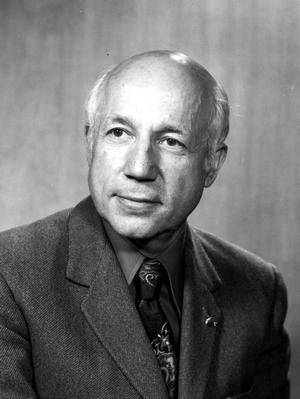 Life on earth as we know it would not be possible if plants were not able to capture the energy of the sun. Figuring out how plants do that, by the process we call photosynthesis, was one of the great discoveries of all time. The person who did that was Melvin Calvin. He did not do this by himself, of course. He had teams of students and colleagues working on the problem for many years before all the pieces of the puzzle came together to show the complete picture.
Life on earth as we know it would not be possible if plants were not able to capture the energy of the sun. Figuring out how plants do that, by the process we call photosynthesis, was one of the great discoveries of all time. The person who did that was Melvin Calvin. He did not do this by himself, of course. He had teams of students and colleagues working on the problem for many years before all the pieces of the puzzle came together to show the complete picture.
Melvin was born in St. Paul, Minnesota in 1911. His parents both immigrated to the United States. His mother, Rose Hervitz Calvin, came from the area known as Georgia, South of Russia. She was a seamstress, and made good money in her unique creations. She designed and created distinctive clothing, household decorations, and specially knitted items. She continued her successful business even into her seventies. Melvin’s father came from Kalvaria, which is now in Lithuania. Melvin says that “According to my father, the name Calvin originated with the immigration authorities and was based on his birthplace in Europe.”
When Melvin was born, his father was a cigar maker in Saint Paul, Minnesota. That is unusual, because Minnesota is not tobacco country. The family lived in a middle-class neighborhood. He had a sister who was born a few years after he was and they enjoyed their childhood together. As a young boy, he fantasized about Indians (Minnesota still has Indian tribes). He was so proud of his complete Native American costume, with long leather pants with fringe down the sides, long sleeve shirt (also fringed), bow and arrows, and even a feather headdress. In addition to having family outings and playtime with nearby cousins, they also enjoyed riding their pony in the back yard. Melvin remembers his neighborhood fondly. “It is strange to realize,” he said, “that now places like my neighborhood in St. Paul are part of a large city and not the quiet, country-like streets that allowed us children to roam about the city and its environs.”
Even as early as three, he had a deep desire to learn. When he had an uncle who was a university student visit his home, he would “study” too. His grandmother learned that for him that meant pacing up and down in his room. He would take apart all of his toys, and would work with them until he understood how they worked, then put them back together again. Little did anyone know that one day he would take apart all the pieces of photosynthesis to figure out how they worked.
